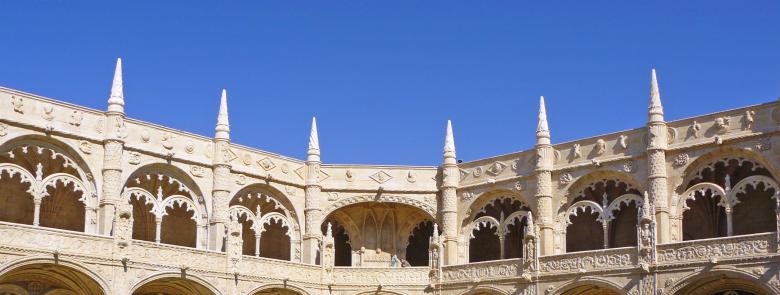Jeronimos Monastery

Jeronimos Monastery
Jerónimos Monastery is an prime example of Manueline architecture, a style unique to Portugal that combines Flamboyant Gothic, Moorish, and early Renaissance influences. It is characterized by an elaborate use of sculptural detail and often includes maritime motifs. Other notable Manueline structures in Portugal include Batalha Monastery and the Templar Convento de Cristo in Tomar.
The main entrance to the monastic church is the south portal, designed by João de Castilho. Occupying the central pillar is a statue of Henry the Navigator. Inside, fragile-looking pillars covered with sculpture support a complex web of lierne vaulting over three aisles. Much of the artwork depicts scenes of St. Jerome, translator of the Vulgate and patron of the Hieronymite order.
The west door leads into the cloisters, where the stonework is even more impressive than the church. Designed by João de Castilho, the cloisters have two levels, the lower one having a groin vault and the most exuberant decoration. Virtually every surface of the arches and pillars are covered in elaborate Manueline sculpture.
Jerónimos Monastery contains the tombs of King Manuel and other Portuguese royalty, as well as many important figures from Portuguese history. Most famous among the latter is Vasco de Gama, whose accomplishments at sea inspired the monastery. Other notables include the romantic poet Herculano (1800-54) and the poet Fernando Pessoa.
